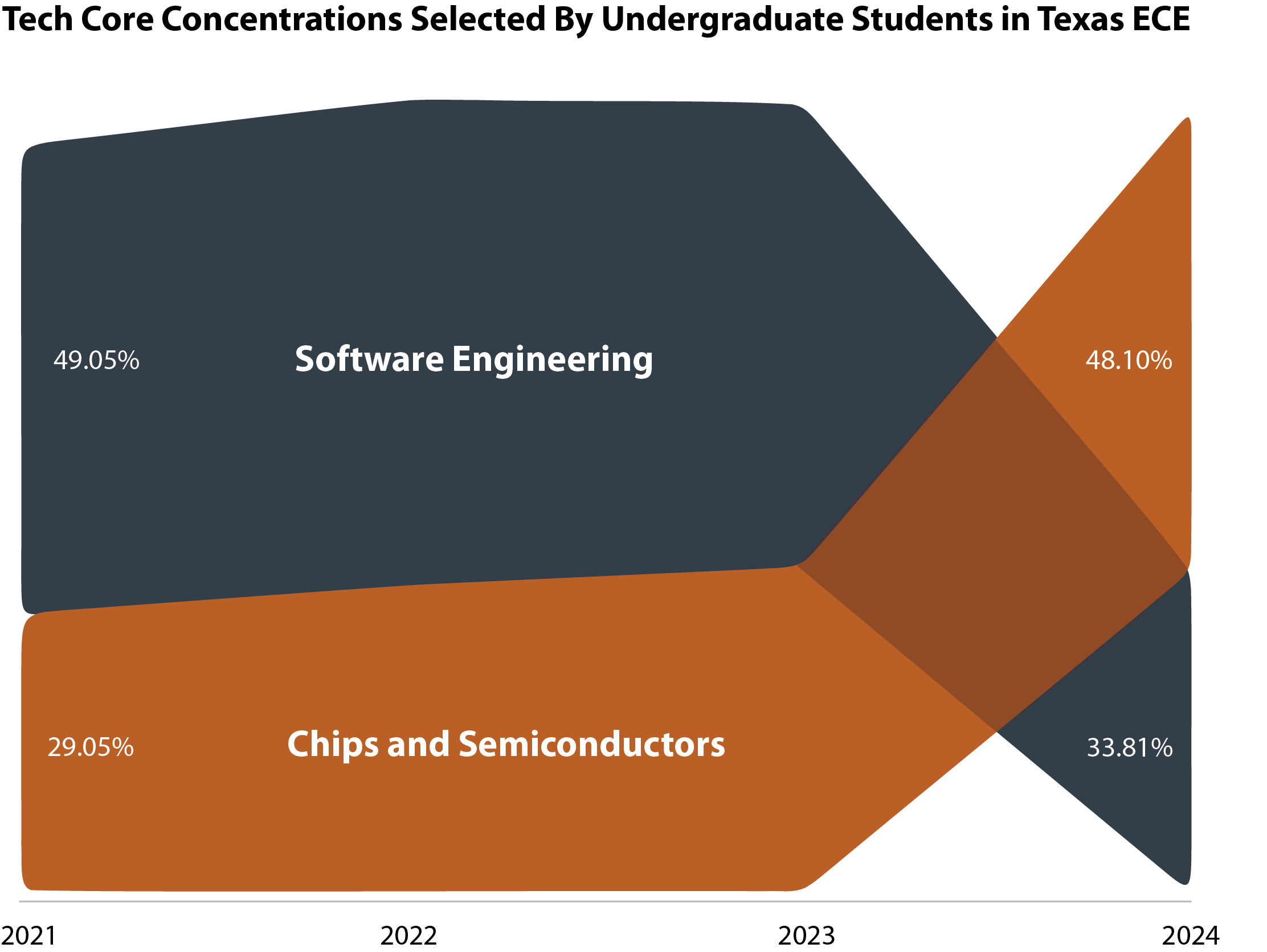Over the past few years, Texas ECE has seen more students gravitating toward hardware-centric courses such as computer architecture, integrated circuits, and semiconductor design, rather than the traditionally popular software engineering track.
The Federal government and corporations alike have made substantial investments in chip research and development, offering scholarships, internships, and lucrative job opportunities that are enticing students into the hardware domain.
The software engineering job market may have become oversaturated and harder for recent graduates to find higher paying jobs with room for early advancement harder to come by. The demand for energy-efficient processing in AI, edge computing, and high-performance computing makes fields like computer architecture and semiconductors more appealing to students eager to be part of cutting-edge technological breakthroughs.
With academia and industry placing a spotlight on innovation in hardware design, many students view courses in computer architecture and semiconductors as pathways to highly impactful and intellectually stimulating careers.

The U.S. CHIPS and Science Act, signed into law in August 2022, has had a significant impact on the academic and professional trajectories of students in ECE as well as the broader U.S. job market. This legislation, which allocates over $52 billion in federal subsidies to boost domestic semiconductor manufacturing, research, and workforce development, has reshaped how universities structure their curricula and how students perceive career opportunities in the tech sector.
Universities, often in collaboration with industry partners, have started expanding or reintroducing programs focused on semiconductor design, fabrication, materials science, and computer architecture. Many schools have received grants or established new research centers funded by the act, offering students hands-on experience with cutting-edge fabrication technologies and chip design tools. This has resulted in increased enrollment in specialized courses related to integrated circuits, VLSI design, and nanofabrication, as students recognize the growing demand for skills in these areas.
Texas ECE researchers have received millions of dollars in the National Science Foundation (NSF) Future of Semiconductors (NSF FuSe2) program. The Texas Institute for Electronics (TIE) at The University of Texas at Austin has been selected to engineer the next generation of high-performing semiconductor microsystem in an $840 million agreement with the U.S. Defense Advanced Research Project Agency (DARPA). A multi-university team including researchers from Texas ECE received a $9.6 million, 30-month award from Natcast, a nonprofit that operates the National Semiconductor Technology Center (NSTC).
Starting in the fall of 2025, UT will offer a new Master of Science in Engineering with a major in semiconductor science and engineering. The program, a collaboration between the Cockrell School of Engineering and College of Natural Sciences, will give students a deep understanding of the science of semiconductors and how to engineer and manufacture these devices.
Last Fall, in a collaborative effort led by department chair Diana Marculescu, associate professor Jaydeep Kulkarni, and with the support of industry partners including Apple, Cadence, NXP, and Silicon Labs, Texas ECE launched a course on ASIC Design targeted towards next generation semiconductor workforce development in integrated circuit design.
